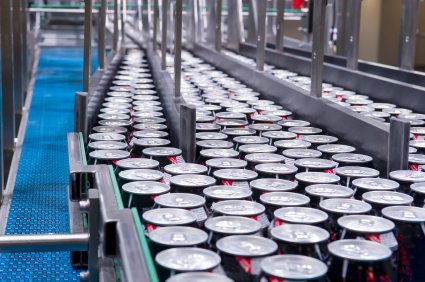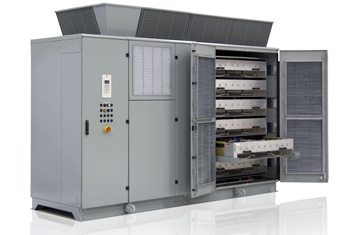Benefits of Using a Variable Speed Drive
 Approximately one third of the world’s electrical energy is supplied by electric motors in fixed-speed centrifugal pump, fan, and air compressor applications. This proves thatsignificant energy efficiency improvement opportunities are available by applying variable speed drives to electric motors.
Approximately one third of the world’s electrical energy is supplied by electric motors in fixed-speed centrifugal pump, fan, and air compressor applications. This proves thatsignificant energy efficiency improvement opportunities are available by applying variable speed drives to electric motors.
Variable speed drives have over the past decade allowed to become a cost efficient way to reduce energy costs and increase system production efficiency. Today variable speed drive manufacturers around the globe are finding more ways to benefit production processes by applying variable speed drives to manufacturing equipment .
Variable speed drives can reduce energy costs up to 50% by speed reduction on applications where the full speed (RPM) of the electric motor is not required.This energy savings is often significant enough to pay for the variable speed drive within a couple of months.
Variable Speed Drive Applications
 Variable speed drives are used in many applications such as swimming pool pumps, air compressors, conveyor belts, lathes, mills, food processing production lines, waste water treatment pumps, HVAC fans and blowers, and many more applications in the industrial manufacturing world. Variable speed drivesare often used in manufacturing facilities to increase or decrease the acceleration and deceleration times on alternating current (AC) motors. Adjusting the acceleration and deceleration timeon an AC motor can add years to the lifespan of an AC motor, and can also improve efficiency on production demands. Variable speed drives can also provide the ability to be programmed to control the frequency of starting and stopping an AC motor.This ability provides a means by which an AC electric motor is only operating when needed for the equipment it’s rotating. AC electric motors have a longer lifespan if they are not continuously operating when they don’t need to be.
Variable speed drives are used in many applications such as swimming pool pumps, air compressors, conveyor belts, lathes, mills, food processing production lines, waste water treatment pumps, HVAC fans and blowers, and many more applications in the industrial manufacturing world. Variable speed drivesare often used in manufacturing facilities to increase or decrease the acceleration and deceleration times on alternating current (AC) motors. Adjusting the acceleration and deceleration timeon an AC motor can add years to the lifespan of an AC motor, and can also improve efficiency on production demands. Variable speed drives can also provide the ability to be programmed to control the frequency of starting and stopping an AC motor.This ability provides a means by which an AC electric motor is only operating when needed for the equipment it’s rotating. AC electric motors have a longer lifespan if they are not continuously operating when they don’t need to be.
Variable speed drives have an average lifespan of up to about 8 years from fractional horsepower through about 10 horsepower, but larger horsepower drives have a longer lifespan which creates a market for manufacturers to use variable speed drive repair centers. Variable speed drive repair centers work closely with manufacturers to keep production at a maximum while reducing production downtime.To learn more about variable speed drives or for variable speed drive repair and replacement quotes, contact Precision Electric, Inc.











